EPISODE 631 is a fascinating look at the wily fingermark and how to catch them on inshore structure around Port Douglas. Check out more Fingermark fishing episodes here.

Isaac Fenech
Sponsored Angler
Isaac is a sponsored angler who has spent his entire life fishing Queensland’s coast from the Mackay area up north to Port Douglas. For the last 6-7 years he’s been fishing mainly the far north region and has developed a bit of a reputation for knowing how to find and catch the elusive fingermark.
Isaac’s Fingermark Fishing Tips
- Fingermark are more pelagic in their feeding habits, and more mobile in moving around feeding areas than most people give them credit for. This can make them quite unpredictable and they’ll crush your theories on where and when to find them – or whether they’ll be on the chew.
- A good starting point for newbies to fingermark is the wrecks that are marked on your Navionics charts. These are easy to find and will entertain you with a range of cool species if the fingermark aren’t home. But if you work the wrecks long enough you’ll definitely come across them.
- Other great areas are the deeper headlands and points, especially those off islands.
- Once you have a cluster of likely marks it’s a case of working them and moving around until you find fish. Isaac finds that you can have ideas about where the fish might show and on what tides and moons (or other conditions), but usually they’ll prove you wrong by not turning up. In any case, the weather often dictates when you can fish, so putting in as much time as possible at likely spots is the key.
- The best ground for fingermark is well inshore of the Great Barrier Reef, so a good strategy is to stop and try a few marks as you head to the reef to chase other species, then stop again on the way back home to try the fingermark ground again.
- In the inshore areas and fringing reefs fingermark tend to be found over rubbly, broken bottom with occasional coral heads and bommies. Ledges are also a rewarding structure for fingermark. All of these areas and structures provide perfect current breaks and Isaac recommends snorkelling them to better understand the fish.
- Because of the transient nature of fingermark and the often short weather windows it’s important to get out at every opportunity irrespective of tides. But all other things being equal, Isaac prefers the run in tide and tends to avoid the neap tides when there is less water movement.
- Fingermark have a distinctive sonar return, so if you’ve identified that you’re over a patch of fingers but they’re not taking your lures it’s important to switch things up by dropping down a smaller lure or switching technique to get them interested in biting. Sometimes the only thing to do is move on and find another patch of fish, or come back later to see if they’ve come on the chew.
Isaac’s Fingermark Fishing Tackle
- For the inshore areas, Isaac loves the Nomad PE2-4 slow pitch jig rod coupled with an Ocea Jigger overhead reel, PE4 braid and 3-4m of Tough Lock Hybrid leader. Bucking tradition for slow pitch work, Isaac prefers the PG (power gear) reels rather than the higher speed versions.
- For fishing soft vibes Isaac likes a 20lb spin outfit and shortens the leader so that the leader knot isn’t going through the bail arm. He’ll use a slightly slower taper rod than most people use for vibing, choosing a rod that has enough backbone to work the vibe but cushions th fish enough that the small hooks in the vibe are less likely to pull out.
Isaac’s Recommended Fingermark Fishing Lures
- Isaac like slow pitch jigs in the 60-80g range for most fingermark fishing applications and typically is fishing in 25 to 35m of water, although he considers 10m of water depth to be the minimum suited to slow pitch jigs. His jigs are rigged with two assists at the top and he finds that when fingermark fishing he doesn’t always have to drop the jig all the way to the bottom, allowing him to use two hooks with minimal snagging. Using his sounder and the colour markings on his braid he’ll drop the jig to the depth where the fish are holding and will start working it immediately with a faster than standard slow pitch technique. With the lower gear reels he uses the jig can be given an action that’s not over the top simply by slapping the tip up and cranking at the same time. If you’re doing this where fish are marking on the sounder and not getting bites, switch it up and change techniques to see what else might work. Isaac replaces the factory hooks on all of his jigs with BKK Searanger assists in the 3XL size for all of his jigs.
- Nomad Squidtrex soft vibes in 95 and 100mm sizes are perfect for inshore fingermark fishing. This lure can be used passively whilst you’re working a slow pitch jig by dropping it to the bottom on a second rod, cranking the lure up off the bottom a few turns and then placing the rod in a rod holder and letting the movement of the boat work the lure. These lures can also be actively worked and are a great option when fishing after dark or in the frequently less than clear inshore waters.
Key Businesses
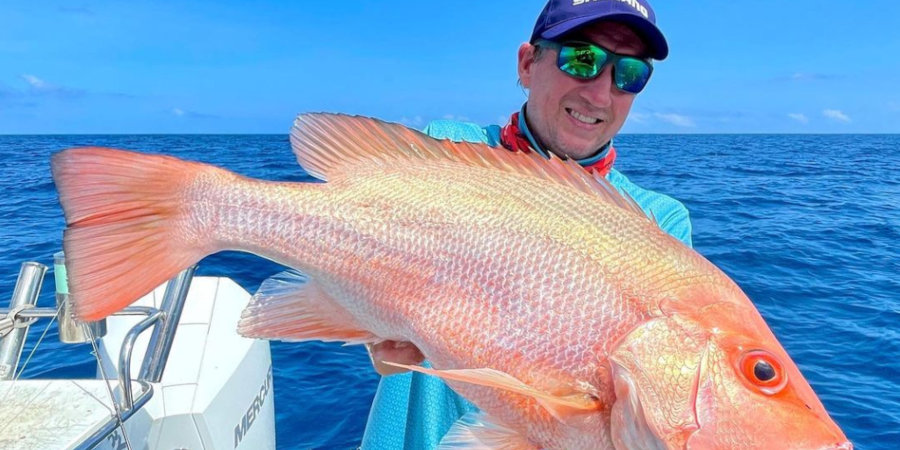
Five Groote Eylandt Fishing Adventures With Bomber Farrell
Bomber Farrell returns to the ALF podcast, this time to explain his top five Groote Eylandt fishing experiences!
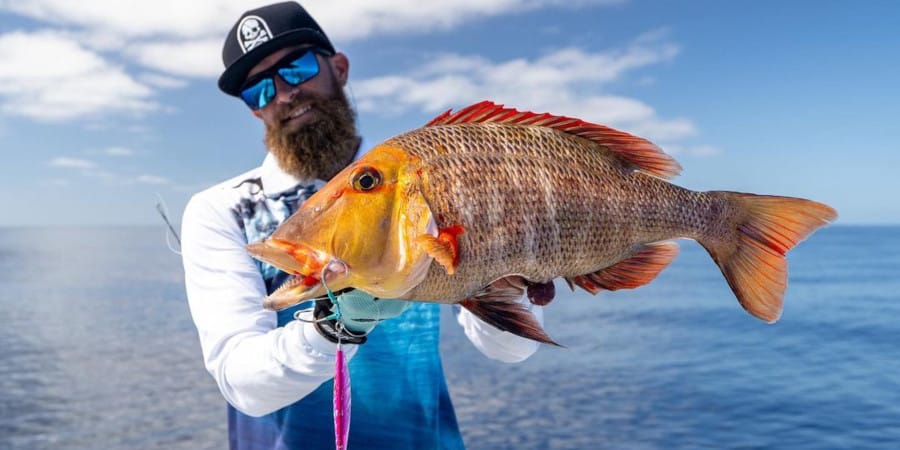
Episode 529: Mackay Slow Pitch Jigging With Mick Hassett
My Slow Pitch Jigging technique is something I’ve been working on lately – I’m on a steep curve. Not Mick Hassett though, he’s a machine with the SPJ and in today’s interview he shares a ton of pro tips.

Mindblowing Groote Eylandt Red Emperors On The Flats
Groote Eylandt is one of Australia’s fishing wonderlands – and one of the few places where sight casting to red emperor in crystal clear water is a thing.
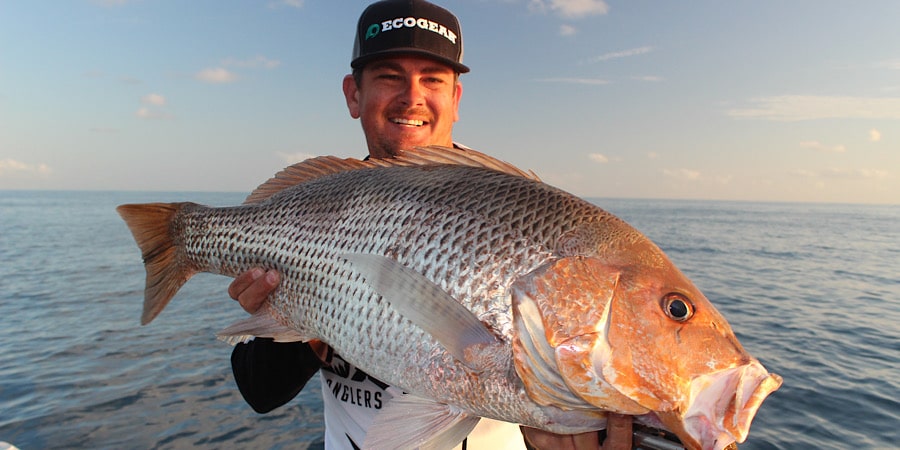
Line Burning Fingermark Fishing Of Lucinda
Lucinda is a fisho’s haven and Liam Fitzpatrick knows the area extremely well.
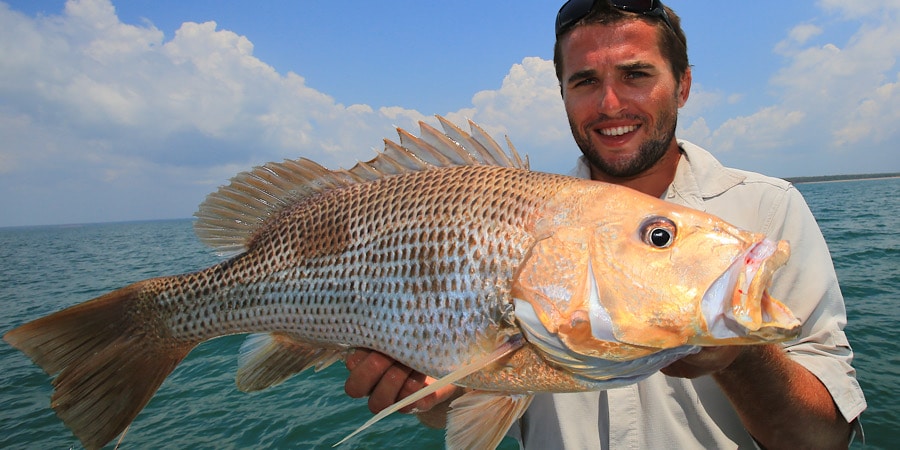
Cobourg Peninsula’s Incredible Golden Snapper Fishing
The Coburg Peninsula is one of those super remote, must-go destinations for anyone wanting to experience the very best f tropical coastal fishing. And Hugh Gange has it all sown up.

Unleashing Fingermark Fishing: Emu Park’s Prized Golden Snapper
Fingermark bream are an amazing northern lure fishing target that pulls hard and looks great! Emu Park sponsored angler Liam Pascoe shares some great tips for getting onto quality fingermark on light gear.
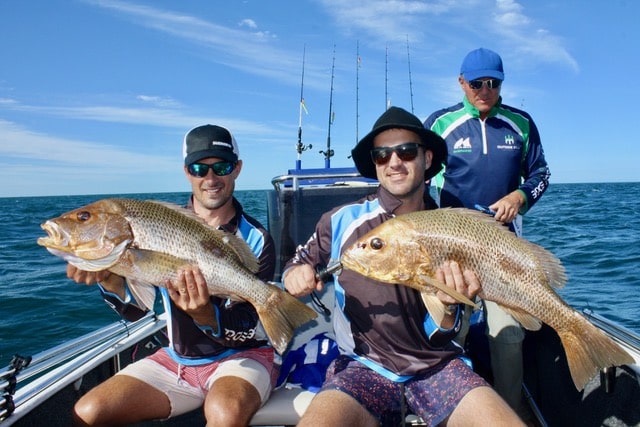
Taming Weipa Fingermark Bream With Nathan Reardon
Nathan Reardon takes us on an adventure to far north Queensland where he targets fingermark bream in shallow water. As always, Nathan explains his preferred tackle and the techniques and lures he uses in this part of the world.

Five Groote Eylandt Fishing Adventures With Bomber Farrell
Bomber Farrell returns to the ALF podcast, this time to explain his top five Groote Eylandt fishing experiences!

Episode 529: Mackay Slow Pitch Jigging With Mick Hassett
My Slow Pitch Jigging technique is something I’ve been working on lately – I’m on a steep curve. Not Mick Hassett though, he’s a machine with the SPJ and in today’s interview he shares a ton of pro tips.



0 Comments